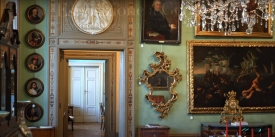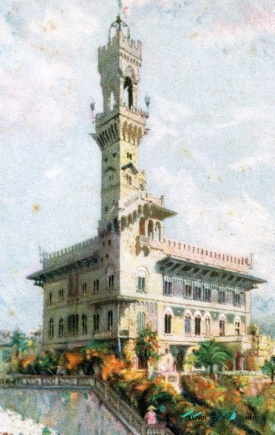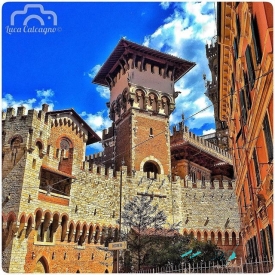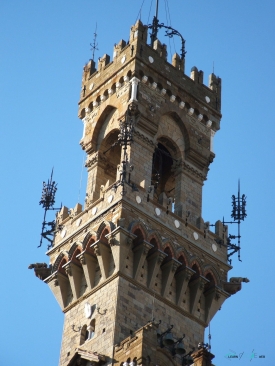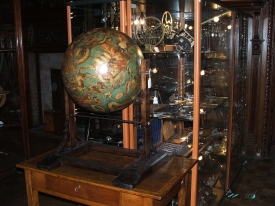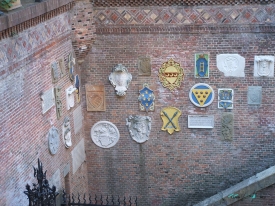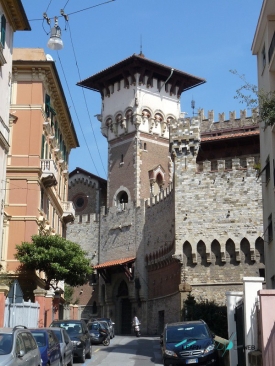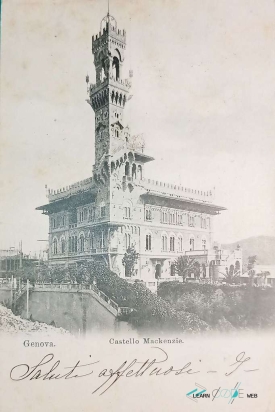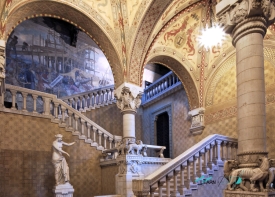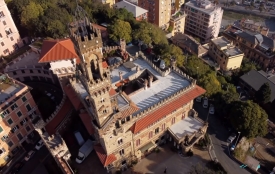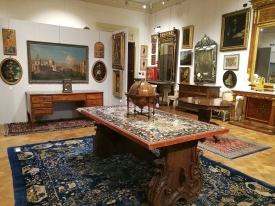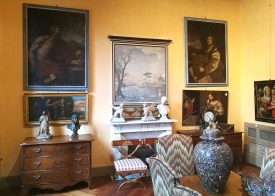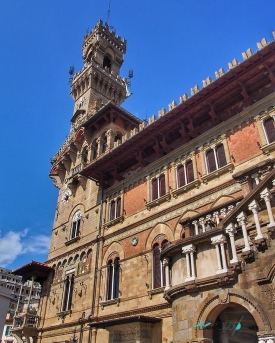Nestled in the residential district of Castelletto, overlooking Piazza Manin and the Casella train station, Mackenzie Castle of Genoa stands proudly 100 meters above sea level. This architectural masterpiece is a captivating landmark that has left an indelible mark on Genoa's cultural and historical landscape.
History and Architecture:
Built between 1893 and 1905, Mackenzie Castle is a splendid example of late 19th-century architectural taste, blending Gothic and Mannerist influences. Commissioned by Evan Mackenzie, an insurance magnate from Florence, the castle was designed by the then relatively unknown architect Gino Coppedè. The castle evolved from a pre-existing rustic villa, incorporating elements from the 16th-century Walls of Genoa. Coppedè's innovative vision resulted in a unique blend of medieval charm and Renaissance grandeur.
The Coppedè Formula:
Gino Coppedè's imaginative touch extended beyond Mackenzie Castle. He created a distinctive formula, successfully applied in various Genoese villas such as Castle Turckle in Capo di Santa Chiara, Castle Coppedè in Priaruggia (his own residence), and Castle Bruzzo in Circonvallazione a Monte.
Visitors and Cultural Significance:
Despite changing hands over the years, including ownership by the American collector Mitchell Wolfson Jr., Mackenzie Castle has found new life under the care of the auction house Cambi. Restored and transformed into a private museum and venue for temporary exhibitions, the castle has become a cultural hub and a testament to Genoa's artistic richness.
Architectural Features and Restoration:
Mackenzie Castle showcases avant-garde construction techniques for its time, including central heating, a heated indoor pool with a sauna, and an elevator capable of carrying up to twenty-five people. Coppedè combined original structures with innovative elements, using materials such as Spezia sandstone and ceramics in the style of the Della Robbia.
After being declared a national monument in 1956, the castle underwent restoration in 2004, coinciding with Genoa's designation as the European Capital of Culture. The restoration not only preserved its architectural integrity but also highlighted its Renaissance-inspired features.
Art and Décor:
The castle's interiors boast exquisite details, including a marble statue of Venus, a three-seat marble throne, a large fireplace, and wrought-iron gates dividing inner courtyards. Carlo Coppedè's tempera paintings depicting the Mackenzie family add a historical touch.
The library, once home to Evan Mackenzie's collection, features wood-paneled ceilings in a 16th-century style. A small Gothic-style family chapel within the castle houses notable works, including an elegant pipe organ, wooden inlaid stalls, and leaded glass windows.
Visit Mackenzie Castle:
Immerse yourself in the allure of Mackenzie Castle, where history, art, and innovation converge. Plan your visit to explore its rich history, marvel at its architectural beauty, and experience the cultural legacy it holds within its walls. Mackenzie Castle is a journey through time and a testament to Genoa's enduring artistic spirit.
History and Architecture:
Built between 1893 and 1905, Mackenzie Castle is a splendid example of late 19th-century architectural taste, blending Gothic and Mannerist influences. Commissioned by Evan Mackenzie, an insurance magnate from Florence, the castle was designed by the then relatively unknown architect Gino Coppedè. The castle evolved from a pre-existing rustic villa, incorporating elements from the 16th-century Walls of Genoa. Coppedè's innovative vision resulted in a unique blend of medieval charm and Renaissance grandeur.
The Coppedè Formula:
Gino Coppedè's imaginative touch extended beyond Mackenzie Castle. He created a distinctive formula, successfully applied in various Genoese villas such as Castle Turckle in Capo di Santa Chiara, Castle Coppedè in Priaruggia (his own residence), and Castle Bruzzo in Circonvallazione a Monte.
Visitors and Cultural Significance:
Despite changing hands over the years, including ownership by the American collector Mitchell Wolfson Jr., Mackenzie Castle has found new life under the care of the auction house Cambi. Restored and transformed into a private museum and venue for temporary exhibitions, the castle has become a cultural hub and a testament to Genoa's artistic richness.
Architectural Features and Restoration:
Mackenzie Castle showcases avant-garde construction techniques for its time, including central heating, a heated indoor pool with a sauna, and an elevator capable of carrying up to twenty-five people. Coppedè combined original structures with innovative elements, using materials such as Spezia sandstone and ceramics in the style of the Della Robbia.
After being declared a national monument in 1956, the castle underwent restoration in 2004, coinciding with Genoa's designation as the European Capital of Culture. The restoration not only preserved its architectural integrity but also highlighted its Renaissance-inspired features.
Art and Décor:
The castle's interiors boast exquisite details, including a marble statue of Venus, a three-seat marble throne, a large fireplace, and wrought-iron gates dividing inner courtyards. Carlo Coppedè's tempera paintings depicting the Mackenzie family add a historical touch.
The library, once home to Evan Mackenzie's collection, features wood-paneled ceilings in a 16th-century style. A small Gothic-style family chapel within the castle houses notable works, including an elegant pipe organ, wooden inlaid stalls, and leaded glass windows.
Visit Mackenzie Castle:
Immerse yourself in the allure of Mackenzie Castle, where history, art, and innovation converge. Plan your visit to explore its rich history, marvel at its architectural beauty, and experience the cultural legacy it holds within its walls. Mackenzie Castle is a journey through time and a testament to Genoa's enduring artistic spirit.



